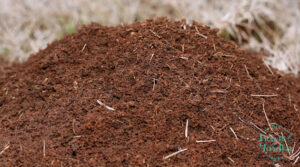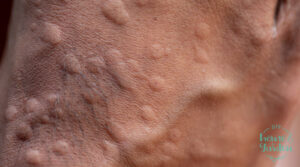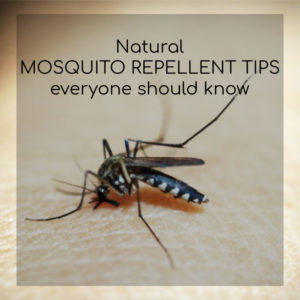Fire ants are more than a nuisance. They damage electrical equipment, destroy farm produce, interfere with building structures and threaten human health.
And not just that…
The United States Department of Agriculture (USDA) warns that fire ants can threaten young and newborn animals. That’s because the venom load is toxic to smaller animals. Furthermore, their bites can cause a painful allergic reaction in pets and small animals, leading to severe painful responses in humans. In the most severe cases, their bites can lead to anaphylactic reactions, similar to a bee sting.
Fireants.org, an Australian group committed to studying their danger explains it further. They work as a colony to defend against any perceived threat–like a child thinking the nest is a sand castle or a cat accidentally walking though it. Then they, swiftly move, covering their “attacker” as a collective. The attack results in dozens of bites with a burning sensation. Hence, the name.
They also note that livestock seem to understand the danger and avoid them. This can lead to mammals avoiding them to the point that they starve or dehydrate to stay away from the danger.
You definitely want to keep these pests off your property before they wreak havoc.
6 Things Gardeners Should Know About Fire Ants
Before we jump into the discussion of how to get rid of fire ants, here are six fascinating facts about fire ants you may want to know:
1 – What are fire ants?
These are tropical American ants with a painful and dangerous sting.
Their body color range from reddish-black to reddish-brown and have a stinger—which they use to inflict the dangerous bites causing a burning sensation; hence the name, fire ant.
Though a look-alike of the common ants, usually found around homes or gardens, fire ants bear some features that distinguish them from the other (native) ants.
Imported Fire Ants
- Are polymorphic. Workers vary in size—right around ¼ inch long.
- Two-segmented bodies
- Black and red compound eyes
- Stinger located at the black gaster tip
- The mound can be two feet in diameter and three feet high
- Large colonies of up to 300,000
- Are highly aggressive—always ready to bite or sting when disturbed.
Common Native Ants
- Are uniform in size
- Range from black to bright red
- The mound measures from just above the ground to as high as two feet in the wild
- Not very aggressive when disturbed.
The Red Imported fire ants (RIFA) are believed to have accidentally entered the United States in the 1930s aboard a cargo ship (hiding in the ballast)—through the Mobile Seaport, Alabama.
From that point, they spread across the Southern United States, including Arkansas, Alabama, California, Georgia, Florida, Mississippi, Louisiana, North Carolina, New Mexico, Oklahoma, South Carolina, Puerto Rico, Texas, Virginia, and Tennessee.
Fire ants also cause significant challenges in Australia, as noted earlier. However, for our purposes, we will focus on the American experience with these insects.
2 – When did fire ants become a problem in the United States?
Once they set their feet on the United States soil, the red imported fire ants stuck to their spread mission—even in the 21st century—refuging mainly in turf, nursery plants’ root balls, and the other agricultural products.
Complete eradication efforts proved futile as the ants quickly adapted to new survival tactics.
Previously the ants could have one or just a few queens in a mound. Still, they resorted to housing numerous queens in these mounds over an extended area for survival and easy spread, thereby slowing the control measures.
Latest control measures have seen the experts quarantine the adversely affected areas, thus limiting the ants’ activities and spread.
3 – What attracts fire ants to a yard?
Some say that electrical systems attract fire ants; however, there is no concrete scientific evidence to support that. That claim is merely anecdotal but worth mentioning.
Generally, fire ants are attracted to greasy or oily foods, including seeds, which they usually take back to the colony for the rest of the ants in the nest.
They also feed on dead animals and living insects and will readily invade potatoes in the garden, especially during dry weather. They are attracted to things that taste sweet like tree sap or honey, love fatty foods (watch around your grill), and will also partake of cat or dog foods.
4 – In what regions do fire ants live?
The imported fire ants largely depend on moisture and food to survive, the reason for their prominent presence in the humid Southeastern and the Southern United States—though they’ve also been occasionally spotted far north and the west.
They nest in almost all soil types in open sunny areas like lawns, meadows, parks, playgrounds, golf courses, pastures, wilderness areas, and agricultural lands.
Relatively hidden areas like near fences and underneath timber offer them much-needed privacy whenever they want the mounds hidden.
5 – What do the nests look like?

Fire ants nest in mounds. These are usually loose piles of dirt or sand with no apparent exit or entry point, especially in the case of the red imported fire ants.
And so they use tunnels underground to get into and out of the mound.
Tunnels may only be visible on the surface of the red imported fire ant workers are convinced that the soil they’ve used in the construction is harder and denser.
Depending on the area, the mounds can be flat or dome-shaped at the top, not going very high, especially if they build them in the grass. However, the undisturbed fire ant mounds—not in turf—can grow past a foot in height.
How to identify a fire ant mound
Ask yourself these three questions to establish whether the mound in your yard belongs to these invasive insects:
- Is the pile fluffy and loose?
- Is it larger?
- Does it lack an opening in the center?
Some people prefer just plowing open the mound to ascertain the presence of these unwelcome guests.
If you decide to go by this method, ensure you wear boots because the ants will quickly dash out to bite and sting just anything their way. It’s their defense mechanism.
6 – Signs and symptoms of fire ant bites
While most people will just experience minor skin irritation when stung by the ants, a few may end up with severe reactions, leading to hallucinations and other related symptoms. Follow basic first aid for insect bites, and the inflammation usually disappears in a few days.
Though rare and extremely life-threatening, anaphylaxis has also been reported by ant-bite victims.
The post-bite reactions often begin with an intense burning or pinching pain, which lasts for a few seconds or minutes—followed by a fierce itchy feeling over the next couple of days. Crowning it all are the pus-filled blisters, the differentiating sign between a fire ant bite and that of the other stinging insects.
In most cases, all these allergic reactions will clear up without treatment. However, if they don’t, seek medical advice.
Inform your medical caregiver immediately if you notice:
- Swelling of the throat or tongue
- Difficulty in breathing
- Loss of consciousness
- Experience dizziness or confusion
If left unaddressed, these allergic reactions can send the body into a shock.
How to treat fire ant bites
Is the victim breathing normally? Do they have no severe ant sting allergy?
If the answer to both questions is ‘yes,’ then simply consider the following home remedies:
- Oatmeal bath. This will help reduce itching.
- Baking soda and lemon juice
Squeeze some lemon juice into a bowl, then apply a small amount to the bitten area. In the case of baking soda, make a paste by mixing a few teaspoons of baking powder with little water, then apply to the affected spot.
- Other great options are honey and apple cider vinegar. Apply to the stung area by following the exact instructions with lemon juice and baking soda.
However, ensure you dilute the apple cider vinegar first with water.
- Cucumber slice. Rub it on the affected spot to help reduce itching.
- Dissolve in some little water, then apply for instant relief. It’s a great alternative to baking soda.
- Olive oil. It contains oleocanthal, a chemical that hinders the activities of certain inflammatory enzymes. Rub a small amount of the oil onto the ant bite!
- Cold compresses also help with inflammation. Use at intervals of 20 minutes. That is, 20 minutes off, 20 minutes on.
- Apply hydrocortisone cream to relieve itching.
- For already scratched (and opened) stings, consider a triple antibiotic ointment to help prevent infection.
How to avoid fire ant stings
Prevention is far better than cure, which is why you want to avoid any fire ant-associated medical emergencies. To do that, take it upon yourself to:
- Educate your family about fire ant hazards.
- Establish signs of fire ant mounds around your yard, taking care not to stand near or on them.
- Wear protective clothing whenever engaging in outdoor activities, especially around the ants’ nests.
- Do not disturb their nests.
- If you notice the ant climbing up on you (an aggressive action they often resort to when you disturb their nests, after which they sting you), shake them off immediately.
- Check for them indoors. Sometimes fire ants move inside to evade extreme weather conditions.
- Control the ants, especially if they’re established in an area you or your family uses frequently.
How to get rid of fire ants naturally.
You might be wondering this question: What kills fire ants naturally? The sad truth is that they are challenging to kill without chemicals. Treatments like boiling water might be worth a try. However, you will most likely only eliminate the workers and not the queen. Thus, they go right back to work almost immediately.
Like other living organisms, fire ants also adapt to the prevailing conditions in their environment to survive, which is why they have developed a thick skin for most organic treatments.
Please note: Some states or counties have specific laws in place regarding the use of chemical pest control products. We suggest you know your local regulations before purchasing any fire ant killer. Also, be sure to read all safety inserts and instructions before applying these treatments. Take special care to keep children and pets out of the area.
So we will move forward with chemical treatments, assuming you already tried the “organic” treatments and failed. (Trust me, I tried all of them in my yard).
Six Best Fire Ant Killers
Here are a few effective fire ant killers to try before throwing in the towel and letting the little buggers have your entire yard to themselves.
1 – Amdro Fire Ant Bait Granules
Baits rate among the most effective ways of getting rid of an entire an’ colony. Amdro Fire Ant Bait is no exception. The ants think the grains are food and carry it back to the queen to consume. Once she eats the granule, she dies.
It’s a great protection barrier against ants around your property.
- Pros: Affordable, covers a large area, and targets the queen. In addition to killing fire ants, you can eliminate other ant species with this granular ant killer.
- Con: You may need to apply it often to be effective. In rainy locations, this can become burdensome.
2 – Ortho Orthene Fire Ant Killer
Like the first product, Ortho Orthene Fire And Killer works by poisoning the queen and the workers to destroy the fire ant colony.
- Pros: This treatment is easy to apply and has a slight odor. It comes with a “kill or your money back” guarantee, so you can purchase it with confidence.
- Con: It’s strictly for outdoor use only. If fire ants invade your garage, basement, or home, you should find a different product.
3 – Fertilome Come and Get It Fire Ant Killer
Fertilome Come and Get It Fire Ant Killer baits using an organic-approved pesticide, Spinosad. Organic gardeners can try this product with a clear conscience.
- Pros: This odorless treatment neither requires mixing nor watering. Fertilome kills the mound and the queen in 24 hours.
- Cons: I have never personally tried this. I checked out many online reviews and found a shared concern–some ants perish with treatment, but the rest just leave and build a nest a few feet away. However, it might be worth a try for organic purposes.
4 – Orange Guard 101 Home Pest Control
Orange Guard utilizes a natural extract—from orange peels—to exterminate ants. Therefore it is safe for pets and children.
- Pros: Made of natural ingredients with a pleasant citrus scent. However, you can also use Orange Guard indoors to exterminate ants instantly. The residual formula “sticks around” to repel further infestations.
- Cons: This product requires a direct application. Thus, you must spray directly on the ants, and you might miss finding the queen.
5 – Ortho Fire Ant Killer Broadcast Granules
They say that prevention is worth a pound of cure–and that’s certainly true when it comes to preventing a fire ant infestation. Ortho Fire Ant killer Broadcast Granules are an effective way of inhibiting the start of a new ants’ colony. You spread the chemical with a broadcast spreader. It begins eradicating your infestation within fifteen minutes and deters them six months after treatment.
- Pros: Acts fast and protect up to 6 months. You can also use it to treat a large area. Cost-effective, as each 11.5-pound bag covers 5,000 square feet.
- Cons: Exhibits a strong odor and will require a follow-up application in six months to provide continual protection.
6 – Syngenta Advion Ant Gel 4 Tubes 30 grams each
Syngenta Advion Ant Gel is a product you may apply indoors or outside, depending on your needs.
- Pros: It works on most ant species, and you only need to apply a small amount. Industrial-strength formula.
- Cons: The gel can quickly solidify in hot locations.
The Takeaway on Exterminating Fire Ants in Your Yard and Garden
A little knowledge can help you eliminate fire ants from your yard with minimal effort.
Here are a few additional tips to help you keep these insects out of your home:
- Storing compost and food in closed containers
- Sealing off entry points
- Keeping the floors clean to confuse the scent trails.
Fire ants are not a laughing matter. They are destructive little buggers with painful bites and can cause severe allergic reactions that could even lead to death. Take steps to get rid of them–aggressively and once and for all.




